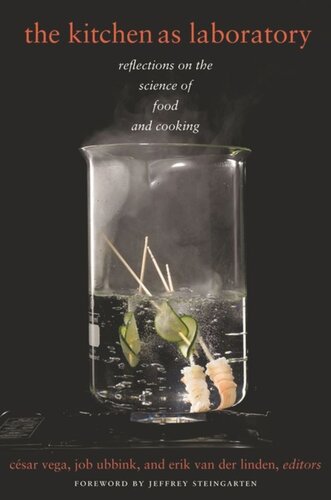

Most ebook files are in PDF format, so you can easily read them using various software such as Foxit Reader or directly on the Google Chrome browser.
Some ebook files are released by publishers in other formats such as .awz, .mobi, .epub, .fb2, etc. You may need to install specific software to read these formats on mobile/PC, such as Calibre.
Please read the tutorial at this link: https://ebookbell.com/faq
We offer FREE conversion to the popular formats you request; however, this may take some time. Therefore, right after payment, please email us, and we will try to provide the service as quickly as possible.
For some exceptional file formats or broken links (if any), please refrain from opening any disputes. Instead, email us first, and we will try to assist within a maximum of 6 hours.
EbookBell Team

5.0
90 reviewsIn this global collaboration of essays, chefs and scientists test various hypotheses and theories concerning? the physical and chemical properties of food. Using traditional and cutting-edge tools, ingredients, and techniques, these pioneers create—and sometimes revamp—dishes that respond to specific desires, serving up an original encounter with gastronomic practice. From grilled cheese sandwiches, pizzas, and soft-boiled eggs to Turkish ice cream, sugar glasses, and jellified beads, the essays in The Kitchen as Laboratory cover a range of culinary creations and their history and culture. They consider the significance of an eater's background and dining atmosphere and the importance of a chef's methods, as well as strategies used to create a great diversity of foods and dishes. Contributors end each essay with their personal thoughts on food, cooking, and science, thus offering rare insight into a professional's passion for experimenting with food.
Eating is a multisensory experience, yet chefs and scientists have only recently begun to deconstruct food's components, setting the stage for science-based cooking. In this global collaboration of essays, chefs and scientists advance culinary knowledge by testing hypotheses rooted in the physical and chemical properties of food. Using traditional and cutting-edge tools, ingredients, and techniques, these pioneers create, and sometimes revamp, dishes that respond to specific desires and serve up an original encounter with gastronomic practice.
From the seemingly mundane to the food fantastic—from grilled cheese sandwiches, pizzas, and soft-boiled eggs to Turkish ice cream, sugar glasses, and jellified beads—the essays in The Kitchen as Laboratory cover a range of creations and their history and culture. They consider the significance of an eater's background and dining atmosphere and the importance of a chef's methods, as well as the strategies used to create a great diversity of foods and dishes. This collection will delight experts and amateurs alike, especially as restaurants rely more on science-based cooking and recreational cooks increasingly explore the physics and chemistry behind their art. Contributors end each essay with their personal thoughts on food, cooking, and science, offering rare insight into a professional's passion for playing with food.